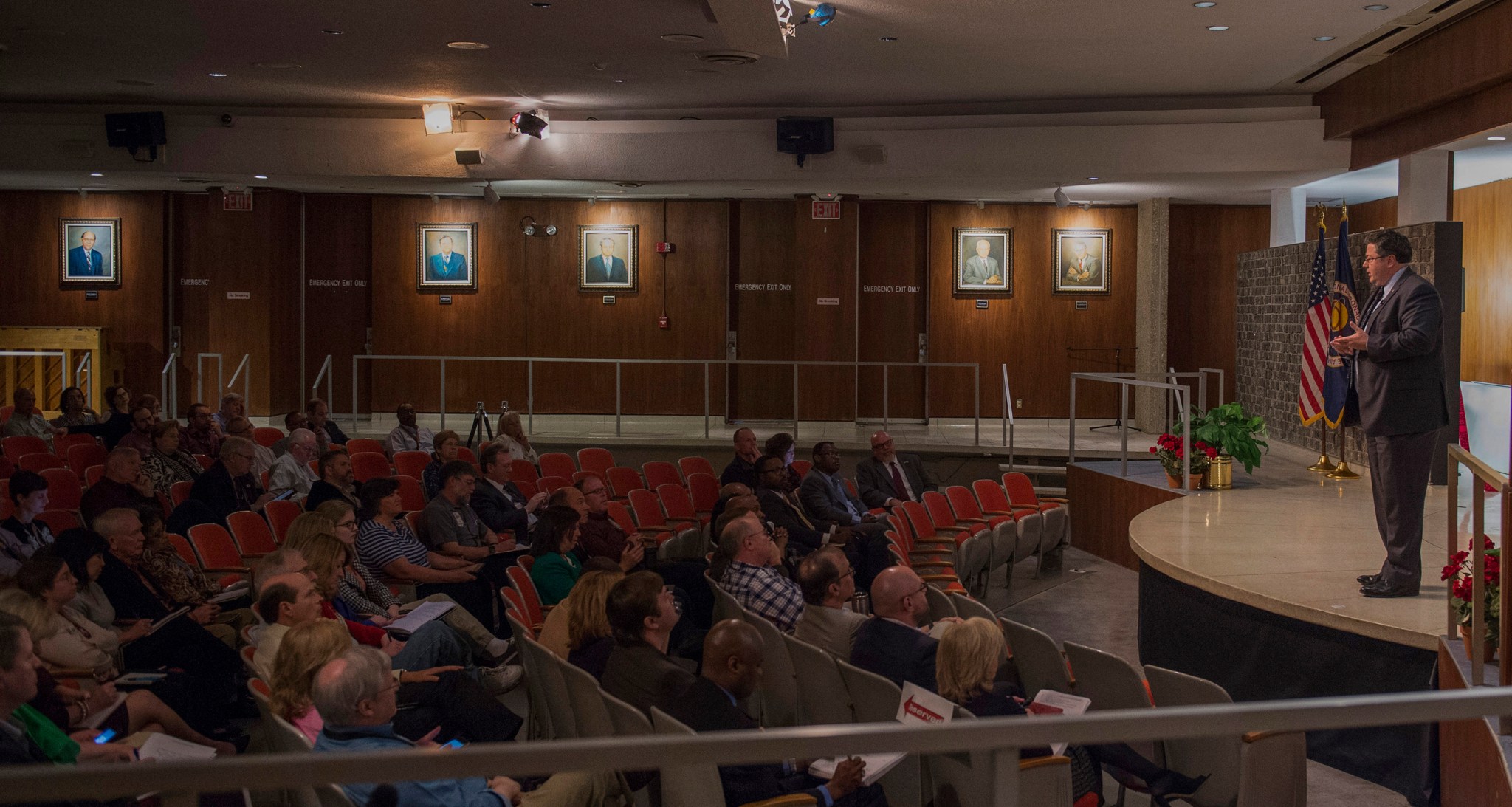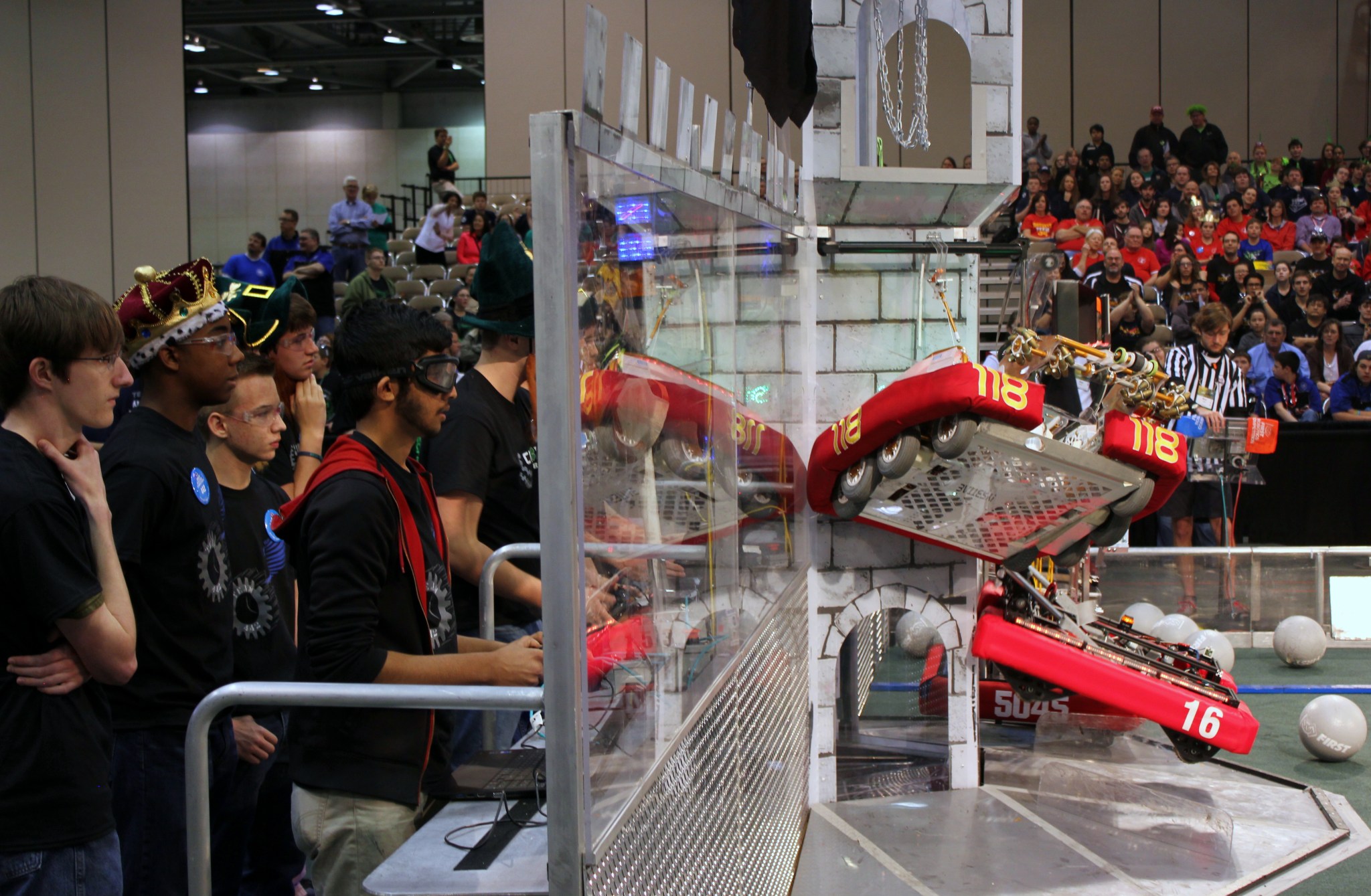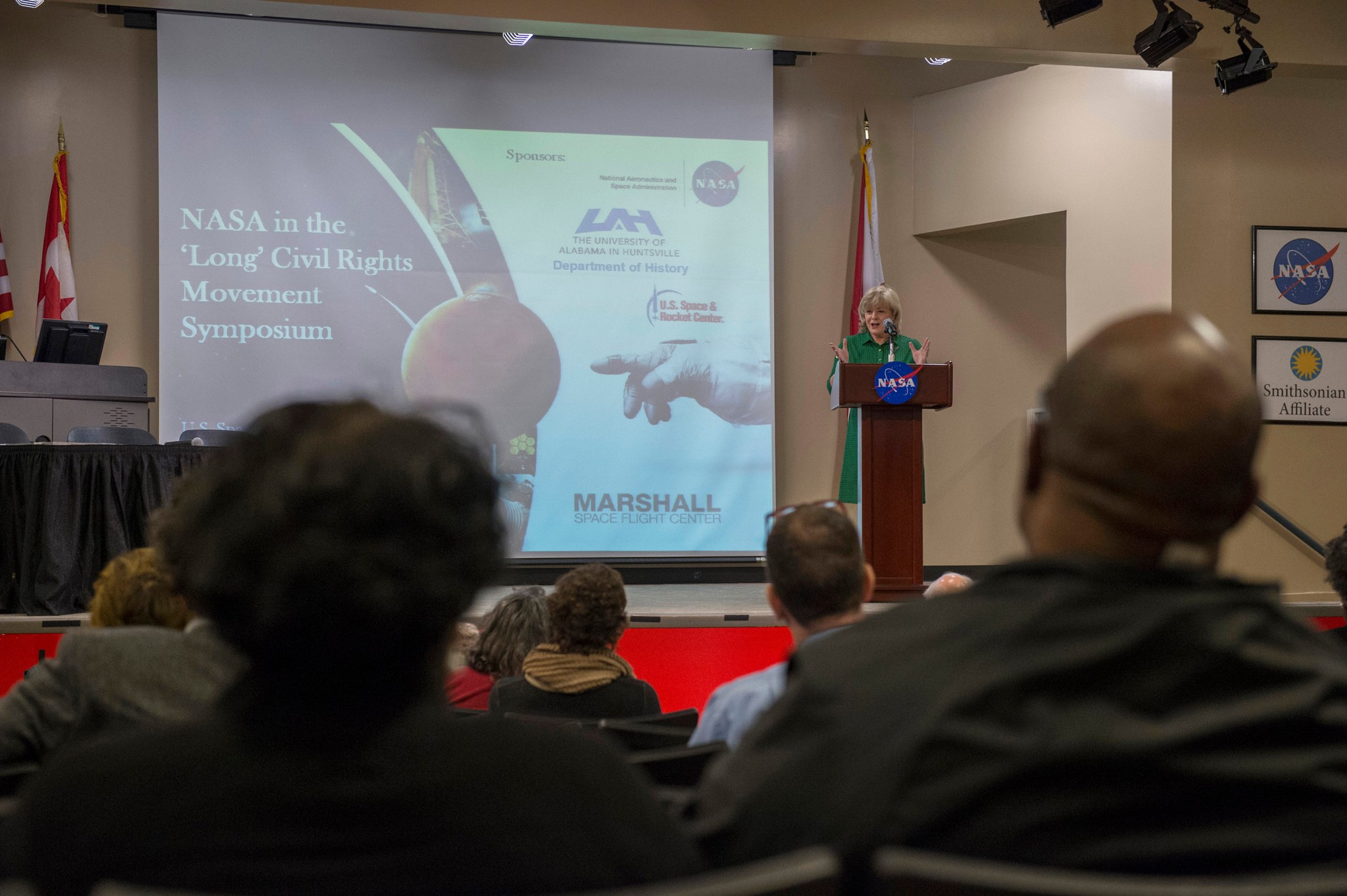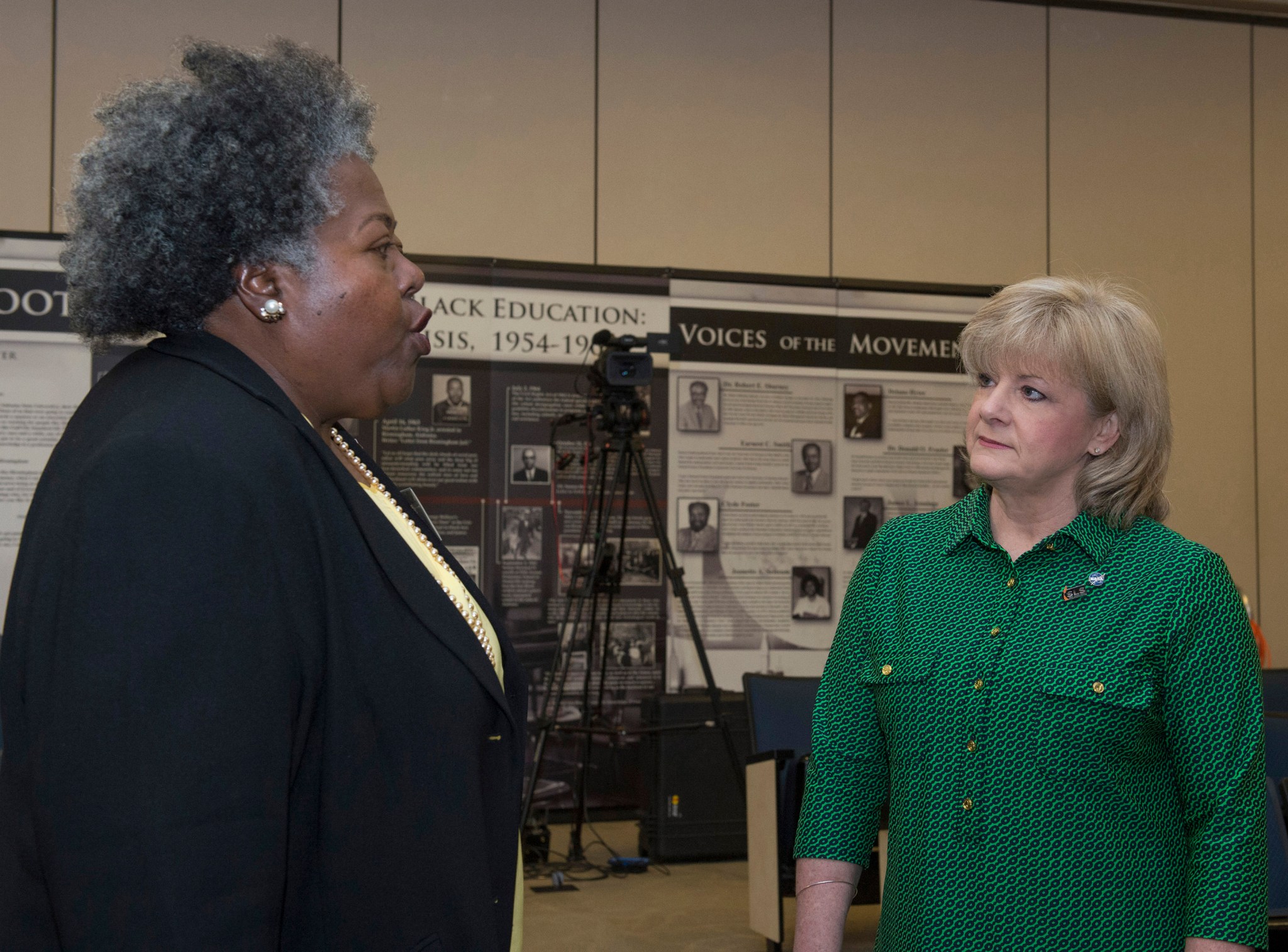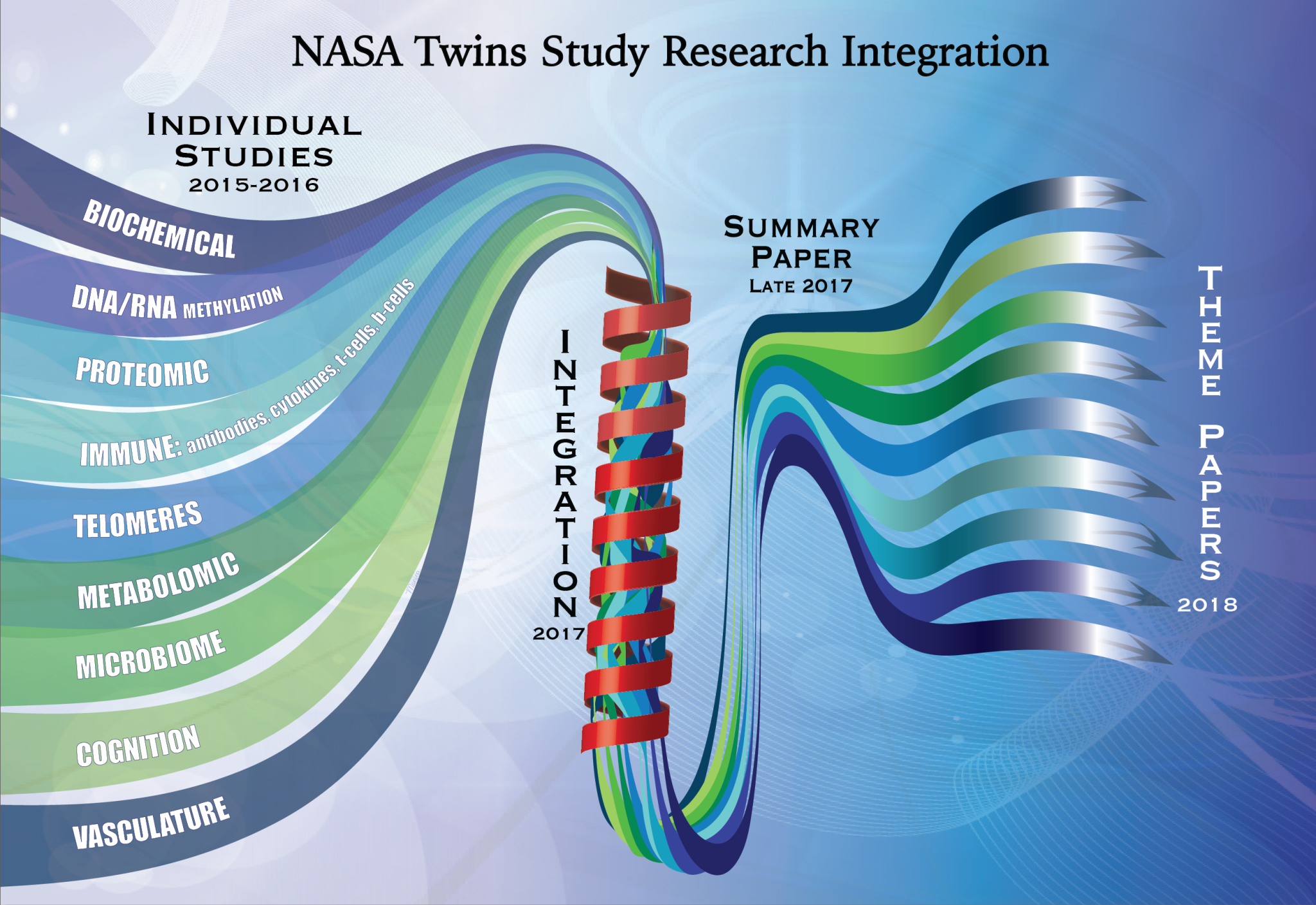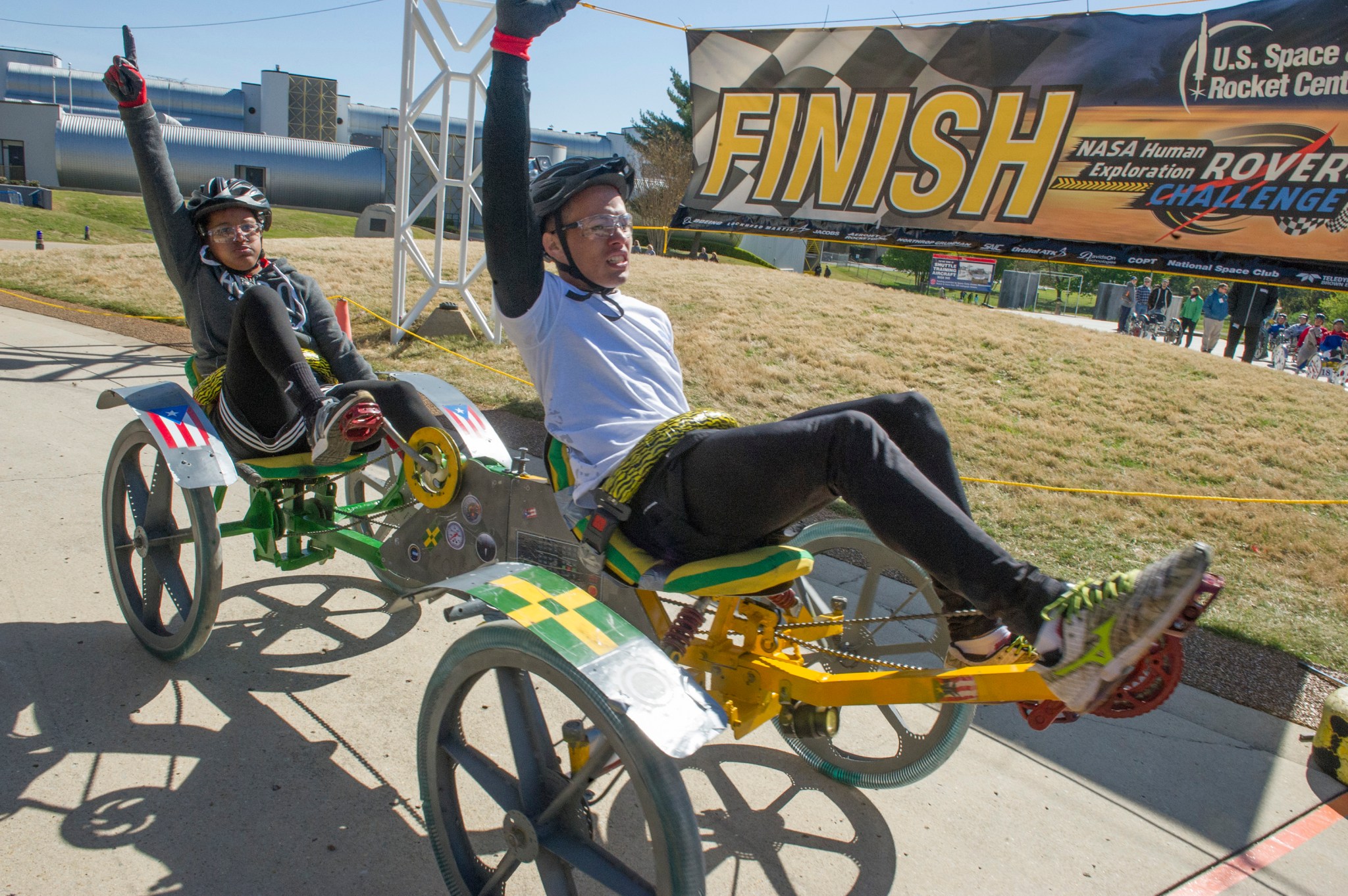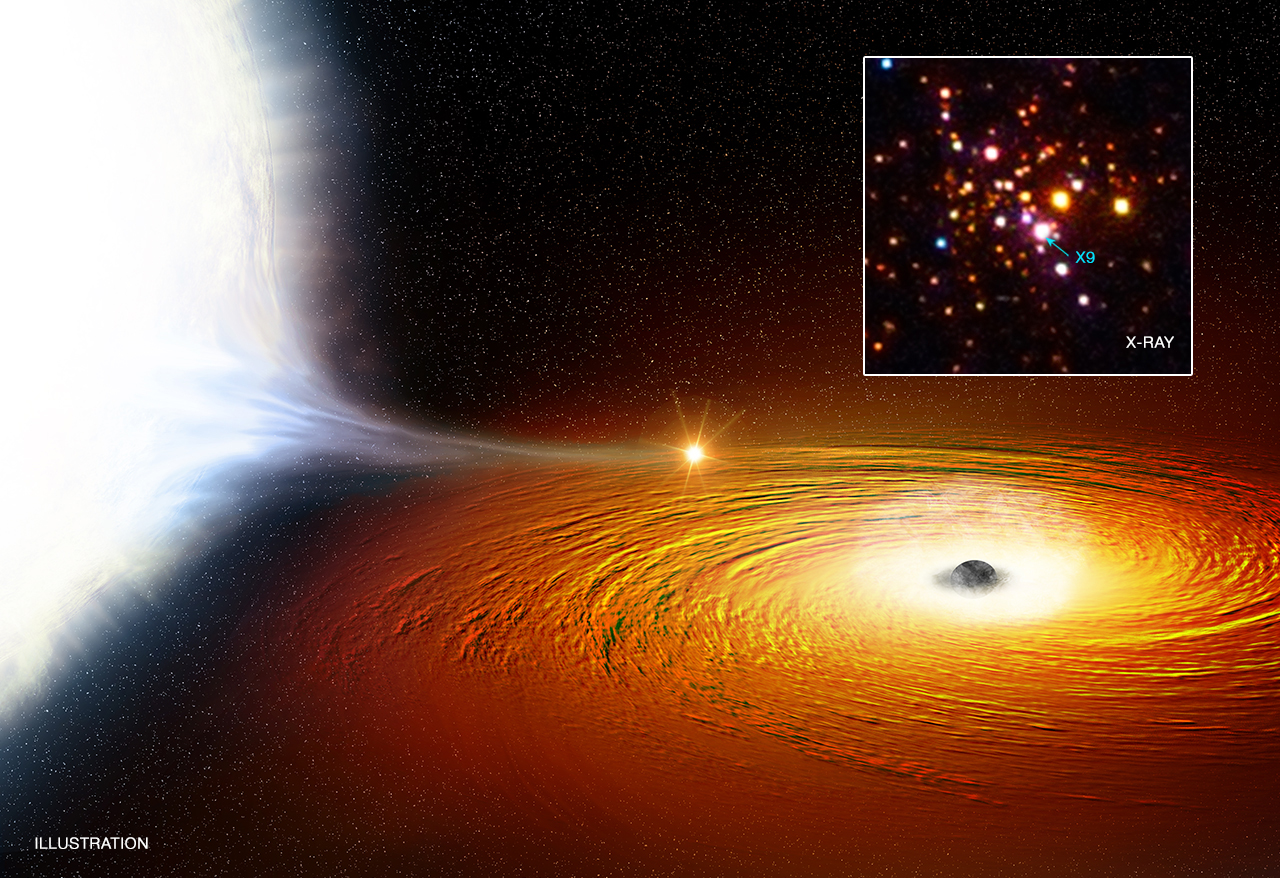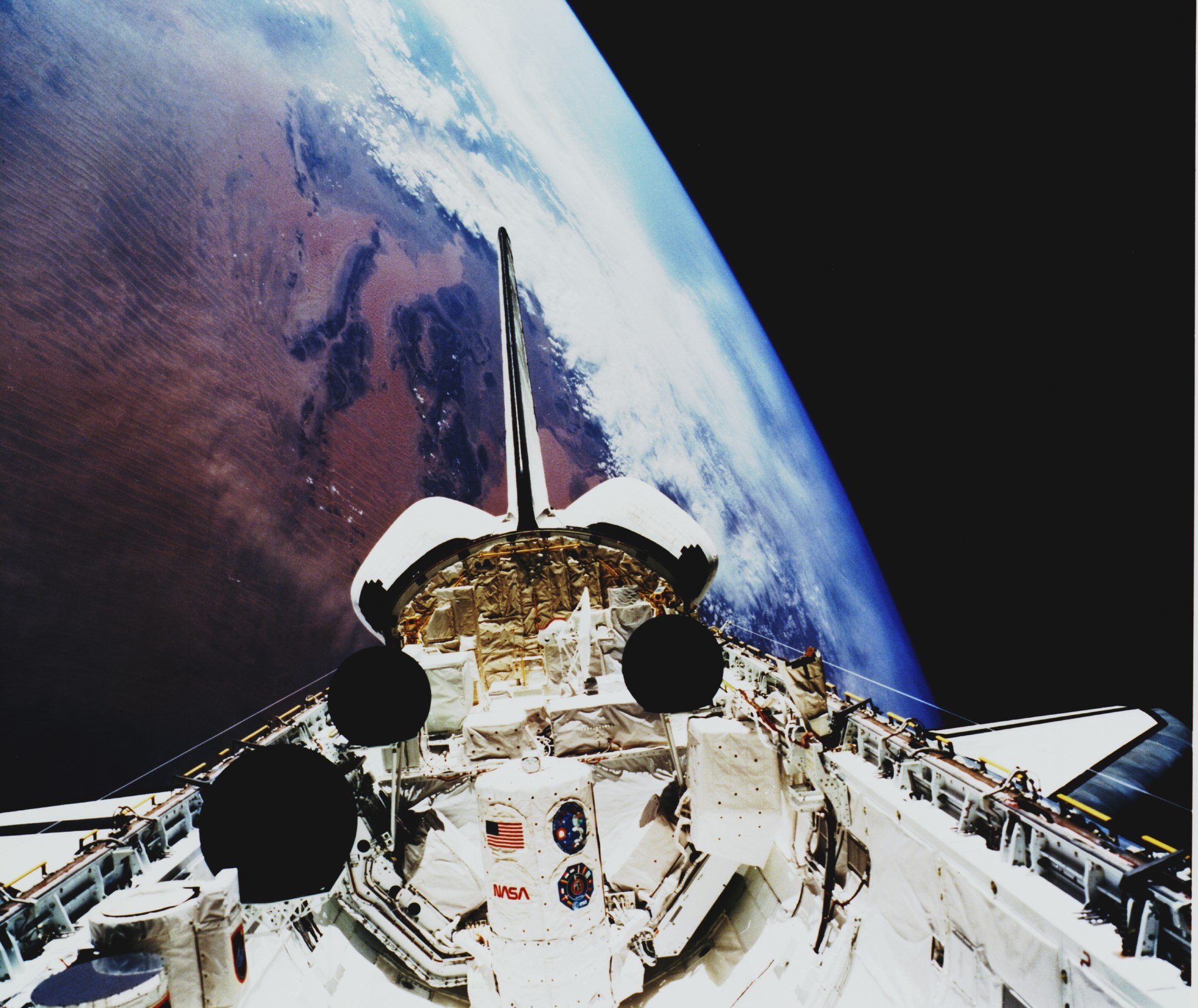In This Week’s Star
- President Signs NASA Authorization Act, Releases FY18 Budget Request
- Astronauts, Marshall Flight-Controllers Set a New Record for Science on Space Station
- FIRST Robotics Competition Returns to Rocket City March 24-25
- Build a Legacy, Leave a Legacy: Mentoring with Jody Singer March 30
- NASA History Symposium Examines Agency’s Role in the ‘Long’ Civil Rights Movement
- Symphonizing the Science: NASA Twins Study Team Begins Integrating Results
- NASA Announces Teams for 2017 Human Exploration Rover Challenge
- Rules for Success to Build Your Career Toolkit Seminar March 29
- Star Discovered in Closest Known Orbit Around Likely Black Hole
- This Week in NASA History: ATLAS-1 Launches to Conduct Space Science — March 24, 1992
President Signs NASA Authorization Act, Releases FY18 Budget Request
By Kenneth Kesner
President Donald Trump signed the National Aeronautics and Space Administration Transition Authorization Act of 2017 on March 21, flanked by NASA Acting Administrator Robert Lightfoot, astronauts and members of the Alabama, Texas, Florida and other congressional delegations. The act authorizes funding for the administration’s $19.1 billion fiscal year 2018 NASA budget proposal and provides a framework for NASA and the nation’s future in space, including human exploration.
“This bill shows, once again, that NASA and Marshall enjoy strong bipartisan and bicameral support for our mission and work,” said NASA Marshall Space Flight Center Director Todd May. “This authorization provides constancy of purpose for our human exploration, science and technology efforts, and ensures that the center will continue to lay the groundwork for the Journey to Mars, and beyond.”
May added that Marshall team members are “a huge reason why this administration and congress are behind NASA and our greater purpose. Each and every day you meet every challenge and continue to deliver on the Space Launch System, International Space Station operations and our entire portfolio of programs, projects and pursuits.”
The proposed Fiscal Year 2018 NASA budget reflects the president’s confidence in the agency, its work and direction, said Lightfoot during a televised NASA-wide all-hands meeting on March 20.
The proposal is 0.8 percent less than the 2017 continuing resolution under which NASA currently operates, and is in line with funding NASA has received in recent years. The budget would allow NASA to effectively execute its core mission for the nation and continue core mission objectives for the nation, even during these times of fiscal constraint.
The budget no longer funds the Office of Education, four Earth Science and some other missions, including the Asteroid Redirect Mission. But overall science funding is stable, and the budget includes $3.7 billion for ongoing development of SLS, Orion spacecraft and associated ground systems, continuing support for those programs at roughly the same level.
“For the most part, the majority of our areas remain stable,” Lightfoot said. “My main message to everybody here is we’ve got plenty to do.”
That message was echoed by May during a center all-hands meeting following Lightfoot’s presentation. “I see very little impact to us as a center,” he said to Marshall team members. “I would feel really good about what this says about us and our mission. Don’t forget the value of what you do.”
The FY18 proposal released March 16 presented a high-level overview of the budget and full details won’t be available until May. Both Lightfoot and May emphasized that NASA will be looking at options in the meantime, that this is only the beginning of the complex budget process and the final FY18 NASA appropriation could look very different after it is taken up in Congress.
“Don’t overreact to this,” May said. “Don’t be too distracted by this right now.”
“When I think of leadership and inspiration for the U.S. government, NASA is right at the top,” Lightfoot said, adding that isn’t a surprise, since a good job description for NASA’s workforce is “making the impossible possible.”
“I just say keep going, keep doing what we’re doing,” he said.
Kesner, an ASRC Federal/Analytical Services employee, supports the Office of Strategic Analysis & Communications.
Astronauts, Marshall Flight-Controllers Set a New Record for Science on Space Station
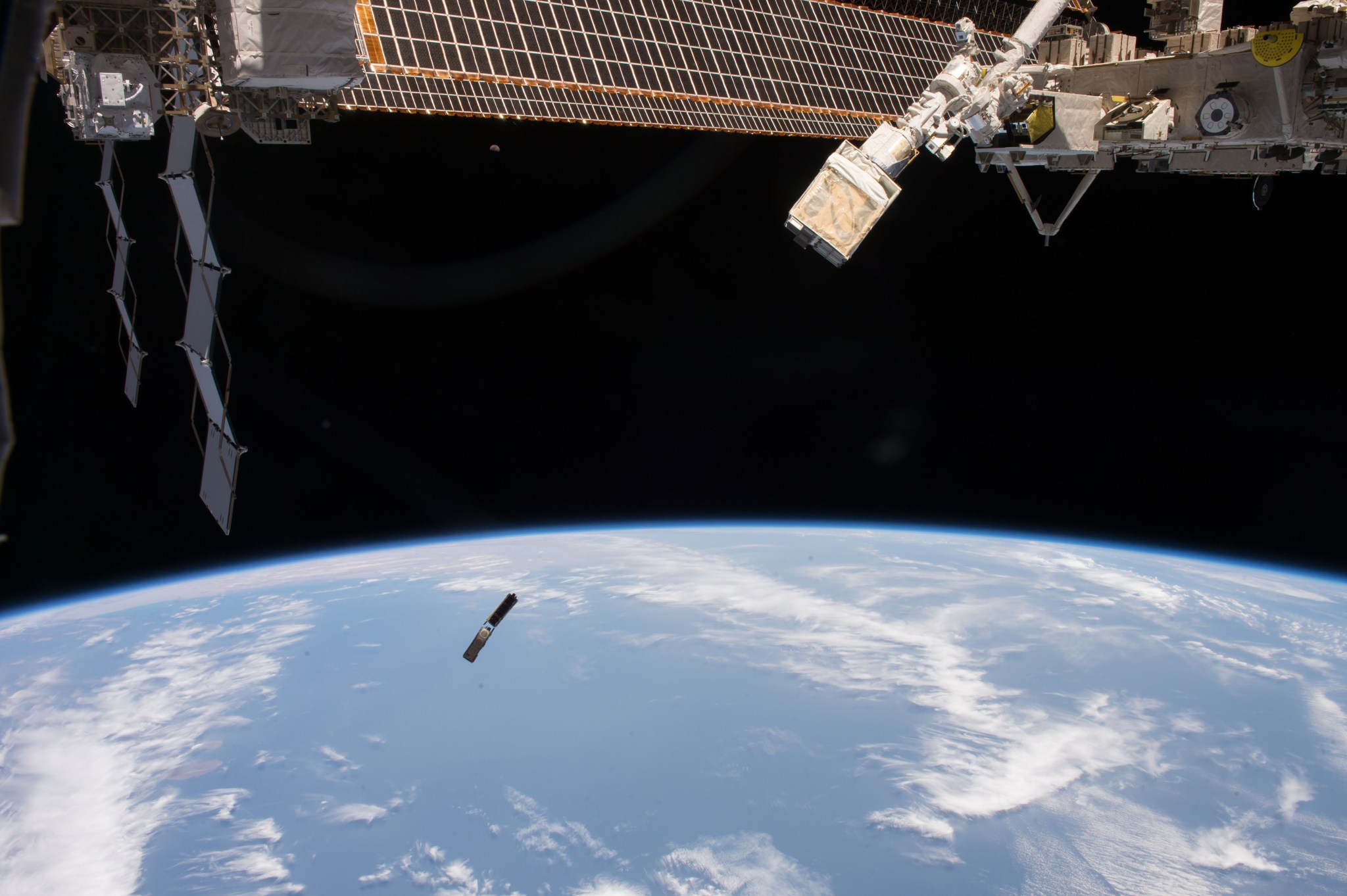
A series of small, shoebox-sized satellites are jettisoned into Earth orbit from the International Space Station on March 6 using the NanoRack CubeSat Deployer. The deployments started a record-setting week of science on the orbiting laboratory. Station crew members conducted nearly 86 hours of experiments and investigations the week of March 6, beating the previous record set in 2014 by two hours. All the investigations were coordinated and managed by flight controllers in the Payload Operations Integration Center — mission control for science located at NASA’s Marshall Space Flight Center (NASA)
FIRST Robotics Competition Returns to Rocket City March 24-25
For the second year in a row, robots return to Huntsville for a regional FIRST Robotics Competition March 24-25 in the South Hall of the Von Braun Center. The FIRST Robotics Competition’s “Rocket City Regional” is sponsored by NASA and supported by the Marshall Space Flight Center.
Nearly 1,300 high-school students on 50 teams from 10 states, Canada and the Dominican Republic will compete in a new robotics game called “FIRST STEAMWORKS.” Two big, mechanical airships from the bygone era when technology relied on steam power will be positioned on the competition field, and three-team alliances called “adventure clubs” must prepare their airships for an imaginary, long-distance race.
Teams will earn points when their robots pick up and deliver balls of “fuel,” toss them into their airship’s steam boilers, retrieve and deliver gears that drive the airship’s fanciful rotors and even climb aboard to be ready for liftoff by the end of each two-and-a-half-minute round. The robots must operate autonomously from pre-programmed instructions for the first 15 seconds, after which operators will take over to continue scoring points — and to defend their club against the competition.
Marshall is also among the sponsors for two “house” teams in this year’s Rocket City Regional — The “Golden Hurricane” from Columbia High School in Huntsville, and the “Mech Tech” team comprised of students from the five high schools in Morgan County, Alabama.
Other Huntsville-area schools competing in the Rocket City Regional include “Redstone Robotics” of Huntsville’s Lee and New Century Tech Demo High Schools; “Grissom Robotics” of Grissom High School in Huntsville; “Cyber Jagzz” of Mae Jemison High School in Huntsville; “Mad Rockers” of Bob Jones and James Clemens High Schools in Madison; “Twisted Gears” of East Limestone High School in Athens; “Rockets” from Limestone County Area Vocational Technical School; “Dragon Slayers” of Arab High School; and “Falcon Engineering and Robotics” of Lincoln County High School in Fayetteville, Tennessee.
Opening ceremonies begin at 8:30 a.m., with qualification matches starting at 9 a.m. March 24-25. The March 24 awards ceremony will begin at 5:45 p.m., while the March 25 awards ceremony will begin at 4:30 p.m. The event is free and open to the public, with hands-on educational activities provided by sponsors and exhibitors.
The FIRST — For Inspiration and Recognition of Science and Technology — Robotics Competition is a worldwide program for students in grades 9-12 that inspires the next generation of explorers to pursue careers in the STEM fields of science, technology, engineering and math. More than 83,000 students on over 3,300 teams worldwide joined the 2017 FIRST Robotics kickoff events live on the internet in January. FIRST also offers the LEGO League, LEGO League Jr. and Tech Challenge programs for younger age groups.
In January, each team received an identical kit of parts and was given a six-week deadline to design, build and test a robot, with the help of adult mentors. District and regional competitions are then held across the country during March and April, providing teams a chance to qualify for the 2017 FIRST Robotics Competition Championship events at Houston and St. Louis in April.
NASA and its Robotics Alliance Project provide grants for high school teams and support for FIRST Robotics Competition in an effort to address the critical national shortage of students pursuing STEM careers.
For Rocket City Regional event information, click here.
Build a Legacy, Leave a Legacy: Mentoring with Jody Singer March 30
On March 30, NASA Marshall Space Flight Center team members are invited to attend a mentoring event hosted by Deputy Center Director Jody Singer from 8:30 a.m.-noon in Activities Building 4316.
The event will focus on building technical and leadership capabilities for future leaders. Attendees will be given a unique opportunity to draw on insights and experiences of current leaders through speed-mentoring and group-mentoring with more than 20 mentors. This event is open to all civil-servants and contractor team members.
Team members can sign-up in SATERN for this unique opportunity here and can add it to their calendar from ExplorNet here.
For more information about mentoring at Marshall visit the Mentoring MATCH ExplorNet page.
NASA History Symposium Examines Agency’s Role in the ‘Long’ Civil Rights Movement
By Brian C. Massey
Researchers, scholars and NASA officials gathered March 16-17 at the U.S. Space & Rocket Center to discuss the role the American space agency played in the civil rights movement. The symposium, titled “NASA in the ‘Long’ Civil Rights Movement,” was hosted by NASA’s Marshall Space Flight Center and the University of Alabama in Huntsville.
The symposium drew its name and conceptual framework from Jacquelyn Dowd Hall’s 2005 Journal of American History essay “The Long Civil Rights Movement and the Political Uses of the Past.” In the essay, Hall explores the responsibility of historians to play a central role in understanding the legacy of the revolution by telling the powerful stories of policies and institutions during the long and ongoing civil rights movement.
“With a long history of employing the best problem solvers from every walk of life and with many field centers located in the Deep South, NASA makes a perfect case study for the topic,” said Marshall Historian Brian Odom. “This symposium looks to add historical depth to the conversation. We want to provide more context for the voices and stories and to develop a better understanding of what’s happened in the past and how that relates to what we’re doing now.”
Essays presented during the symposium covered topics ranging from the integration of the Deep South, to women at NASA, and many other aspects of the civil rights movement. Each topic added a new perspective to the conversation, and allowed for the framing of stories in a historical context, according to Odom.
“As historians, we are able to add layers to the conversation, to connect the dots,” said Veronica Henderson, one of the symposium’s moderators and the interim head archivist at the historically black Alabama A&M University in Normal. “Having historians get together and relate the different stories to a point in history, we can uncover more. We can explore things not previously thought about or considered, and putting these stories into context allows us to see things from a different point of view.”
Looking at things differently and thoughtfully is central to the conversation, according to NASA Chief Historian Bill Barry. “It’s important to look at what we’re doing, how we’re doing it and to realize that how we do things is important,” he said. “How we treat others makes a big difference in how much we accomplish. And together, with people from every walk of life, we can accomplish more.”
The essays will be compiled and published as an anthology to provide a deeper understanding and academic basis for future research on the subject, and hopefully to inspire future generations.
“People from all races, genders, ages, ethnicities and sexual identities have played big roles at NASA,” said Odom. “And we need young people to see themselves in NASA’s future, and to see that many people have made efforts to knock down barriers that existed. Hopefully this symposium and the works collected here will provide the groundwork to relay the examples for them to learn from and see themselves in.”
Massey, an ASRC Federal/Analytical Services employee and the Marshall Star editor, supports the Office of Strategic Analysis & Communications.
Symphonizing the Science: NASA Twins Study Team Begins Integrating Results
It begins with one instrument. Then another joins in. Before you know it, a grand symphony is playing before your eyes. NASA Twins Study researchers are eager to integrate their results and create a symphony of science.
While NASA astronaut Scott Kelly spent a year in space aboard the International Space Station, his identical twin brother, retired astronaut Mark Kelly, spent that year on Earth. Comparing the twins’ biological samples will yield important information on how spaceflight affects the human body. These trailblazing genetic studies will help NASA keep astronauts safe on a journey to Mars.
Preliminary findings were discussed during the Human Research Program Investigators’ Workshop in January, and now enthusiasm abounds as the integration process begins. The investigators are a unique group of researchers with different expertise associated with genetic and physiological areas of study.
The symphony begins with data. Big data. The Twins Study was established as a pilot study for sharing data highlighting the genetic ecosystem in our body. Typically, research is done individually and results are made public in scientific journals that kickoff discussions of findings. However, this study is different. From the start, the Twins Study investigators have planned to integrate their results before publishing.
Each investigation is like an instrument. On its own, it plays solo music. But put them all together and you have something incredible.
The next step in the Twins Study is composing the symphony. As individual researchers analyze and compile their data they will be sharing their individual and integrative analyses with the Stanford team headed by Mike Snyder, who will apply different methods to further integrate it into big data sets and begin composing a masterful ensemble. After that, the investigators will begin to review the integrated data set to either confirm or modify their initial findings.
The researchers view the study as a new piece of music where they learn their individual parts and then join together with the conductor to play the musical score. Through the integration of data from biochemical markers, cognitive ability, gut bacterial composition, and biomolecules, they hope to identify health-associated molecular effects of spaceflight to protect astronauts on future missions.
“The human systems in the body are all intertwined which is why we should view the data in a holistic way,” said Scott M. Smith, manager for nutritional biochemistry at NASA’s Johnson Space Center. Smith conducts biochemical profiles on astronauts and his research is targeted to specific metabolites, end products of various biological pathways and processes.
The orchestra is only warming up now. As the data from individual investigations start filtering into the integrated composition, researchers and NASA eagerly await the results. When the full score of integrated data is ready, the summary of results will be published in late 2017 or early 2018. After that, individual investigators will publish theme papers with more detailed findings of the various investigations. As NASA embarks on its next journey, the results of the Twins Study will provide a front-row seat in this grand performance of human exploration.
NASA’s Human Research Program is dedicated to discovering the best methods and technologies to support safe, productive human space travel. HRP enables space exploration by reducing the risks to human health and performance using ground research facilities, the International Space Station, and analog environments.
NASA Announces Teams for 2017 Human Exploration Rover Challenge
By Megan Davidson
Ready for a race! Nearly 100 high school and college teams from across the globe will put their smarts and strength to the test March 30-April 1 during NASA’s Human Exploration Rover Challenge at the U.S. Space & Rocket Center in Huntsville, Alabama. Participating teams are from 23 states, the District of Columbia and Puerto Rico, as well as competitors from several different countries, including Brazil, Germany, India and Mexico.
The challenge highlights NASA’s goals for future exploration to Mars and beyond. Inspired by the lunar roving vehicles of the Apollo moon missions, the competition challenges students to solve engineering problems, while highlighting NASA’s commitment to inspiring new generations of scientists, engineers and explorers. Hosted by NASA’s Marshall Space Flight Center and the U.S. Space & Rocket Center, Rover Challenge is managed by Marshall’s Academic Affairs Office.
Student teams are required to design, build, test and race human-powered rovers, driven by one male and one female. The nearly three-quarter-mile course boasts 17 grueling obstacles that simulate terrain found on Mars, other planets, moons and asteroids throughout the solar system.
Teams will race to finish the course with the fastest times, with prizes up for grabs in competitive divisions. The event concludes with an awards ceremony, where corporate sponsors will present awards for best design, rookie team and other accomplishments.
“The NASA Human Exploration Rover Challenge team and its innovative partners are extremely excited to host this engineering design competition,” said Diedra Williams, acting manager of Marshall’s Academic Affairs Office. “The Rover Challenge allows for young talent to work together to solve complex engineering problems that include design, construction and testing. It is great fun — but also reflects the real-world complexity of problem solving with practical, hands-on experience. We look forward to seeing the enthusiasm and inventive ideas they bring to the competition.”
This year’s race has a new, optional feature called the “Drive Train Technology Challenge.” Teams can develop reliable systems such as belts, drive shafts or direct drives to replace commonly used chains. Cash awards will be given for best overall performance.
Teams will arrive in Huntsville on March 30 for on-site registration, with the race taking place from 7:30 a.m. to 5 p.m. March 31 and April 1. The event concludes with a ceremony at 5 p.m. April 1 in the Davidson Center for Space Exploration at the U.S. Space & Rocket Center.
The two-day event and awards ceremony will be live on Marshall’s Ustream, with real-time updates on the Rover Challenge Twitter account.
Davidson, an ASRC Federal/Analytical Services employee, supports the Office of Strategic Analysis & Communications.
Rules for Success to Build Your Career Toolkit Seminar March 29
Having the right tools to excel on the job is a recipe for success at any stage in your career. On March 29, NASA Marshall Space Flight Center team members are invited to attend a one day seminar titled “Building Your Career Toolkit: Rules for Success” from 8:15 a.m.-4 p.m. in Building 4200, Conference Room P110.
The seminar, hosted by the Office of Diversity & Equal Opportunity for Marshall’s Federal Women’s Program in celebration of Women’s History Month, will highlight how to successfully navigate workplace rules, identify hurdles and provide tips for how to overcome them.
Jeanne d’Orleans, keynote speaker from Corporate Strategies by SkillPath, will present a series of career-enhancing topics on assertiveness such as:
- Polishing Your Unspoken Message: Body Language and Active Listening: this session will highlight the characteristics of assertive body language and how to stop sabotaging what you say with inappropriate body language
- Dealing with Difficult Situations, Difficult People, and Conflict: provides helpful tips for saying no or refusing a request without feeling guilty and how to respond to passive aggressive communication with diplomacy and tact in order to get the results you need
- Understanding the Essentials of Assertiveness: highlights tips for how to distinguish among assertive, passive and aggressive behaviors and how to speak your mind or ask for what you want without seeming pushy.
Breakout sessions will include topics such as how to thrive in times of change and how to build confidence to move to the next level in your career.
This event is open to all civil servants and contractor team members. Interested team members are required to register for the seminar in SATERN.
Star Discovered in Closest Known Orbit Around Likely Black Hole
Astronomers have found evidence of a star that whips around a black hole about twice an hour. This may be the tightest orbital dance ever witnessed for a likely black hole and a companion star.
This discovery was made using NASA’s Chandra X-ray Observatory as well as NASA’s NuSTAR and Commonwealth Scientific and Industrial Research Organization’s Australia Telescope Compact Array.
The close-in stellar couple — known as a binary — is located in the globular cluster 47 Tucanae, a dense cluster of stars in our galaxy about 14,800 light years from Earth.
While astronomers have observed this binary for many years, it wasn’t until 2015 that radio observations with the ATCA revealed the pair likely contains a black hole pulling material from a companion star called a white dwarf, a low-mass star that has exhausted most or all of its nuclear fuel.
New Chandra data of this system, known as X9, shows that it changes in X-ray brightness in the same manner every 28 minutes, which is likely the length of time it takes the companion star to make one complete orbit around the black hole. Chandra data also shows evidence for large amounts of oxygen in the system, a characteristic feature of white dwarfs. A strong case can, therefore, be made that the companion star is a white dwarf, which would then be orbiting the black hole at only about 2.5 times the separation between Earth and the moon.
“This white dwarf is so close to the black hole that material is being pulled away from the star and dumped onto a disk of matter around the black hole before falling in,” said first author Arash Bahramian of the University of Alberta in Edmonton, Canada, and Michigan State University in East Lansing. “Luckily for this star, we don’t think it will follow this path into oblivion, but instead will stay in orbit.”
Although the white dwarf does not appear to be in danger of falling in or being torn apart by the black hole, its fate is uncertain.
“Eventually so much matter may be pulled away from the white dwarf that it ends up only having the mass of a planet,” said co-author Craig Heinke, also of the University of Alberta. “If it keeps losing mass, the white dwarf may completely evaporate.”
How did the black hole get such a close companion? One possibility is that the black hole smashed into a red giant star, and then gas from the outer regions of the star was ejected from the binary. The remaining core of the red giant would form into a white dwarf, which becomes a binary companion to the black hole. The orbit of the binary would then have shrunk as gravitational waves were emitted, until the black hole started pulling material from the white dwarf.
The gravitational waves currently being produced by the binary have a frequency that is too low to be detected with Laser Interferometer Gravitational-Wave Observatory that has recently detected gravitational waves from merging black holes. Sources like X9 could potentially be detected with future gravitational wave observatories in space.
An alternative explanation for the observations is that the white dwarf is partnered with a neutron star, rather than a black hole. In this scenario, the neutron star spins faster as it pulls material from a companion star via a disk, a process that can lead to the neutron star spinning around its axis thousands of times every second. A few such objects, called transitional millisecond pulsars, have been observed near the end of this spinning up phase. The authors do not favor this possibility as transitional millisecond pulsars have properties not seen in X9, such as extreme variability at X-ray and radio wavelengths. However, they cannot disprove this explanation.
NASA’s Marshall Space Flight Center manages the Chandra program for NASA’s Science Mission Directorate. The Smithsonian Astrophysical Observatory in Cambridge, Massachusetts, controls Chandra’s science and flight operations.
This Week in NASA History: ATLAS-1 Launches to Conduct Space Science — March 24, 1992
This week in 1992, space shuttle Atlantis and STS-45 launched from NASA’s Kennedy Space Center. The mission carried the first Atmospheric Laboratory for Applications and Science on Spacelab pallets mounted in the orbiter’s cargo bay. The non-deployable payload, equipped with 12 instruments, conducted studies in atmospheric chemistry, solar radiation, space plasma physics and ultraviolet astronomy. ATLAS-1 was part of a series of Spacelab missions managed by NASA’s Marshall Space Flight Center. Today, Marshall’s Payload Operations Integration Center serves as “science central” for the International Space Station, working 24/7, 365 days a year in support of the orbiting laboratory’s scientific experiments. The NASA History Program is responsible for generating, disseminating, and preserving NASA’s remarkable history and providing a comprehensive understanding of the institutional, cultural, social, political, economic, technological, and scientific aspects of NASA’s activities in aeronautics and space. For more pictures like this one and to connect to NASA’s history, visit the Marshall History Program’s webpage. (NASA)



























